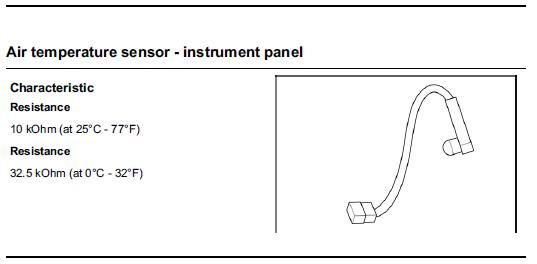Chicago Mark said:Really? Having an air temp readout bothers some of you that much? Add an oil temperature reading dipstick and be done with it already. No muss, no fuss.
YMMV,
Mark
How does reading that while riding go for you?
Follow along with the video below to see how to install our site as a web app on your home screen.
Note: This feature may not be available in some browsers.
Chicago Mark said:Really? Having an air temp readout bothers some of you that much? Add an oil temperature reading dipstick and be done with it already. No muss, no fuss.
YMMV,
Mark
caspar said:How does reading that while riding go for you?


Phang is correct. The air temp displayed on the dash is not fed by the air box sensor used to control the fuel mixture. The display has it's own thermometer to display OAT.Phang said:I believe the ECU gets the intake air temperature feedback from the sensor located at the air box lid. IMHO, the air temperature sensor in the instrument panel is irrelevant to the fuel trimming.
caspar said:I like your thinking Phang. I did think of something similar, but I worry about how it may mess with the ECU if it does use the signal for other things...that's why I was hoping for a way to program it to pick up a different signal, then the change will only be to what is displayed not the actual signals being sent into the ECU.
Erice, I'm aware of those, but knowing the oil temperature isn't something I'm desperate for it just rates a LOT higher on the 'wants' list than ambient temperature. Hence why I think it would be a better use of space than what is currently there. Also those aren't the safest things to be checking while riding, if they're the same ones I'm thinking of.
I suspect Mark is probably closest to the logic of Mandello, knowing the air temperature wont send anyone into a panic...but that logic doesn't explain the inclusion of battery voltage as a read out (no, I wont start a thread about this, I'll just flick past it in my menu).
Cars do have a temperature gauge, it isn't numeric, it is an indicator that has a 'safe' region and 'too hot/cold' regions; if they're going to show any sort of temperature this is the sort of thing they should be showing.


Even if no proper thermistors can be found some small digital circuit can do the job and can even translate the measured range into what the dashboard can display if it cannot get up to 150 Celsius....kampe said:Maybe there are thermistors for sale with the right resistance but what's the best spot on the engine to place such a device?
Chicago Mark said:Really? Having an air temp readout bothers some of you that much? Add an oil temperature reading dipstick and be done with it already. No muss, no fuss.
YMMV,
Mark
Series4 said:But why? High end synthetics (like the recommended oil) will take up to 300Cº. What problem are you trying to solve?
Well, maybe not an issue if never leaving the city as some traffic light did supply the chance to look down on the fancy dip thermometer.Mi_ka said:My air cooled NX650 Dominator was constantly in the 140-145 C region when traveling two-up in hot Summer highway conditions ...